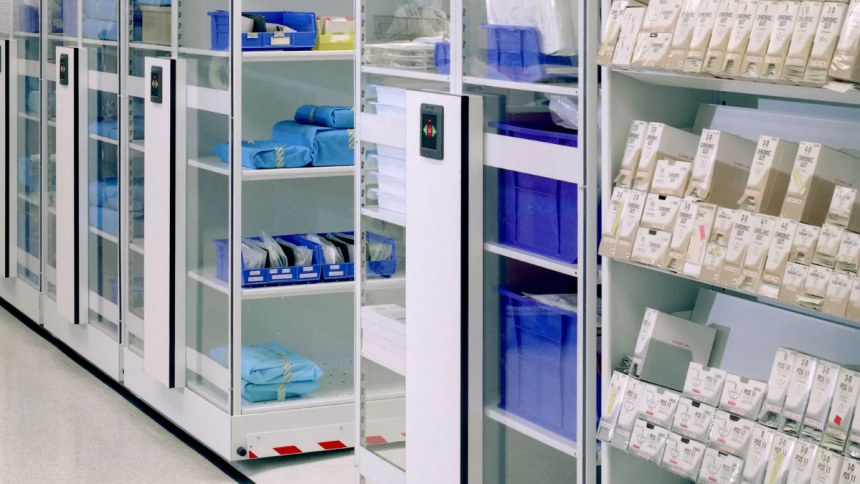Managing critical emergency supplies is vital for ensuring safety and preparedness during unforeseen events. One of the most effective storage solutions is to utilize customizable systems that maximize efficiency and space, making it easier for emergency responders to access essential equipment when every second counts. Smart storage options can aid in organizing supplies, ensuring they remain accessible and usable in times of need.
In small spaces, creative management of vertical areas and portable containers can significantly enhance storage capability. Incorporating strategies like these not only supports readiness during an emergency but also aids in maintaining the integrity of stored items. Such solutions are invaluable for both personal preparedness and professional environments, where optimized storage can make a substantial difference.
For emergency response teams, keeping supplies in order can make all the difference. A solid storage system helps avoid delays, maximizes space, and ensures everything is within reach when it’s needed most. To improve organization and readiness, you can check out EMS storage solutions to understand how they support efficient and accessible storage management.
Essential Components of Emergency Supplies
Effective management of emergency supplies relies on key elements including safety priorities, medical essentials, food and water reserves, and communication management. Each element plays a vital role in ensuring preparedness for unforeseen events.
Prioritizing Safety and Preparedness
Safety remains paramount in any emergency situation. An emergency kit should include emergency contact info, evacuation routes, and protocols for shelter in place. Important documents like insurance policies and identification should be stored in waterproof containers. A well-prepared emergency plan supplies peace of mind and guides actions during crises.
For ease of transport, storing the emergency supplies in durable, easy-to-carry containers is crucial. Incorporating reflective tape and labelling ensures that supplies are easily visible and identifiable in low-light conditions.
Medical and First Aid Essentials
A comprehensive first aid kit is indispensable. It should contain first aid supplies such as bandages, antiseptic wipes, ointments, and pain relievers. Including essential prescription medications ensures continuity of care during emergencies, especially for those with chronic conditions.
For injuries requiring immediate care, dressing pads and sterile gloves are crucial. Including a first aid manual aids in providing basic medical assistance when professional help may be delayed. Contact info for health professionals should be readily accessible.
Food and Water Storage
Nonperishable food is vital, emphasizing those with a long shelf life like canned goods, protein bars, and infant formula for families with young children. Each item should be easy to prepare without cooking, in case power and gas supplies are impacted.
Water is critical, with a recommendation of at least one gallon per person per day. Storing in sterilized containers extends water shelf life, and water purification tablets provide an added layer of safety. Regularly checking expiration dates ensures all items remain safe and effective.
Communication and Information Management
Communication devices, such as battery-powered or hand-crank radios, maintain contact with news updates. A list of emergency contact info helps streamline communication during breakdowns in regular channels.
Backup batteries and power banks prolong device usage times. Equipping a precautionary manual charging method minimizes reliance on electricity. Including a copy of evacuation routes and community emergency plans is advantageous for rapid decision-making during crises.
Innovative Storage Solutions and Management
Innovative storage solutions play a critical role in ensuring emergency supplies are organized, accessible, and reliable when needed. These approaches encompass advanced storage options, effective maintenance practices, and supportive services.
State-of-the-Art Storage Options
Technological advances have resulted in the creation of versatile storage solutions. Smart lockers provide customizable storage options to accommodate various emergency supplies, from medical kits to specialized tools. Portable storage units, such as mobile containers, offer flexibility in storing and transporting essential items. These units are especially valuable for their adaptability and efficient space utilization, ensuring that supplies remain secure and easily accessible.
Shelving systems optimized for vertical spaces are also essential, particularly for small areas. Wall-mounted shelves make efficient use of vertical space and allow easy access to critical supplies. Labelling is crucial to prevent confusion and enhance organization when time is limited.
Maintaining and Rotating Supplies
Proper management of supply inventory is critical for emergencies. Rotating supplies ensures that first aid supplies retain freshness and efficacy. It’s crucial to monitor expiration dates, especially for perishable items like medications and batteries. Automated tracking systems help by sending reminders to replace aging supplies before they expire, thus preventing wastage.
To extend the shelf life of supplies, maintaining an environment with controlled temperatures and humidity is essential. Tools for managing these conditions, such as temperature monitors and dehumidifiers, can be integrated into storage setups to minimize degradation of stored goods.
Services and Support for Emergency Supply Management
Comprehensive services and support networks enhance the efficiency of managing emergency supplies. Companies offering tailored solutions for emergency preparedness provide essential guidance and support. This includes installing storage setups and training personnel on optimal use.
Organizations like PTA groups can assist in coordinating community efforts to gather, organize, and distribute supplies. Professional services extend to managing logistical challenges, such as identifying suitable locations and ensuring the timely delivery of critical items. By leveraging expertise, communities can maintain a state of readiness, ensuring that resources are available when disaster strikes.
Conclusion
Organizing and managing critical emergency supplies effectively requires thoughtful planning and strategic use of storage solutions. Storage containers and shelving systems offer secure and accessible means of storing essential items, ensuring they are readily available during emergencies. Proper categorization and labelling of supplies enhance efficiency, making it easier for responders to locate necessary items quickly.
Utilizing areas like basements or installing robust shelving provides additional storage capacity. Incorporating methods such as Mylar bags with oxygen absorbers can significantly extend the lifespan of stored supplies, maintaining their usefulness over time.
These measures, combined with a proactive approach, ensure that essential emergency supplies are managed efficiently and effectively.
Lynn Martelli is an editor at Readability. She received her MFA in Creative Writing from Antioch University and has worked as an editor for over 10 years. Lynn has edited a wide variety of books, including fiction, non-fiction, memoirs, and more. In her free time, Lynn enjoys reading, writing, and spending time with her family and friends.















